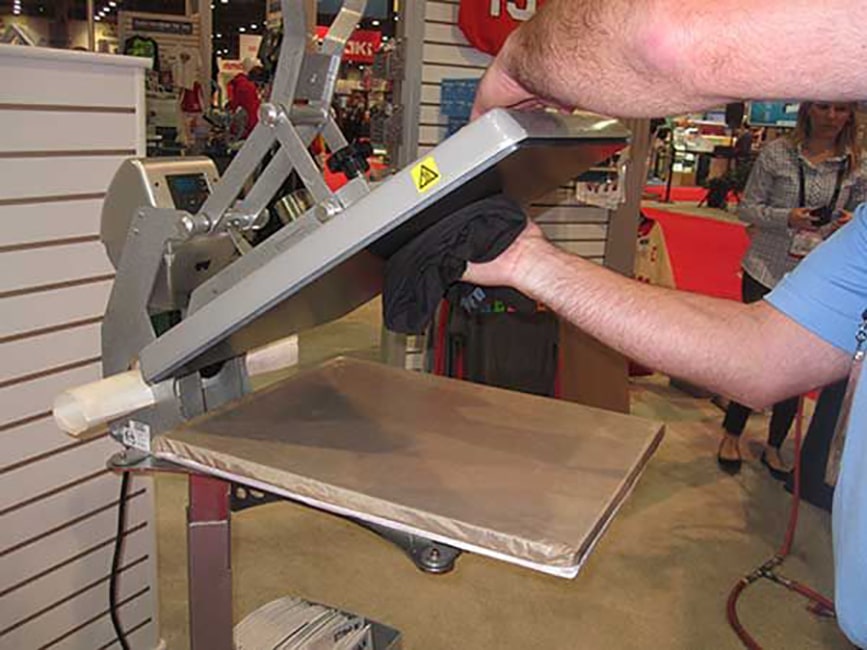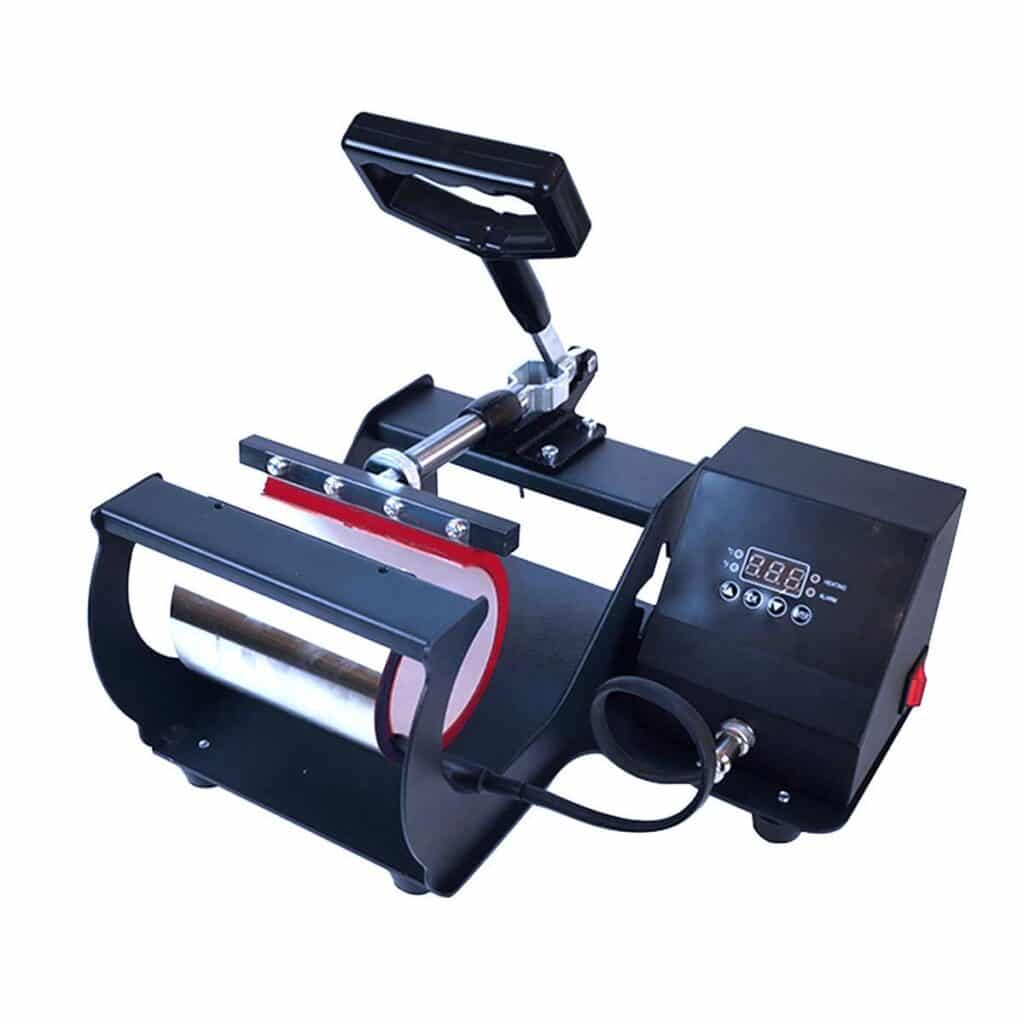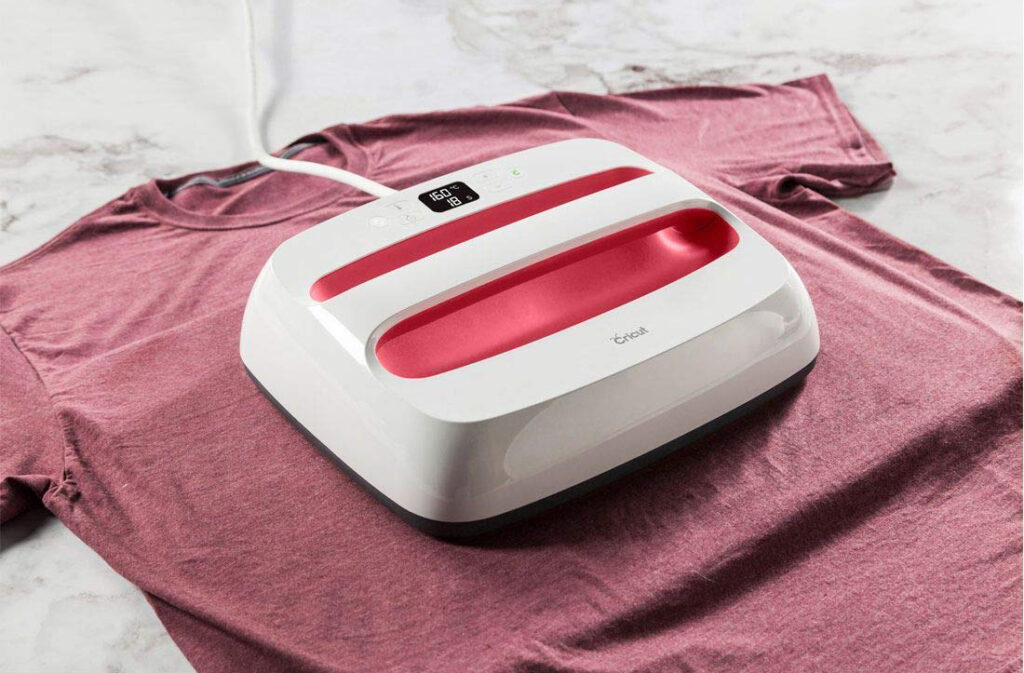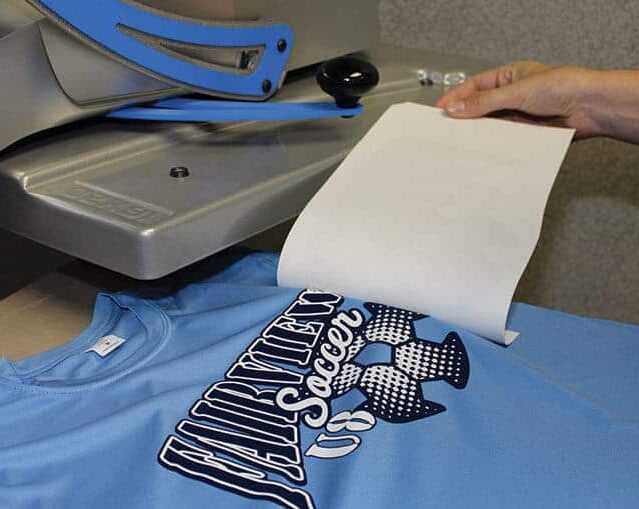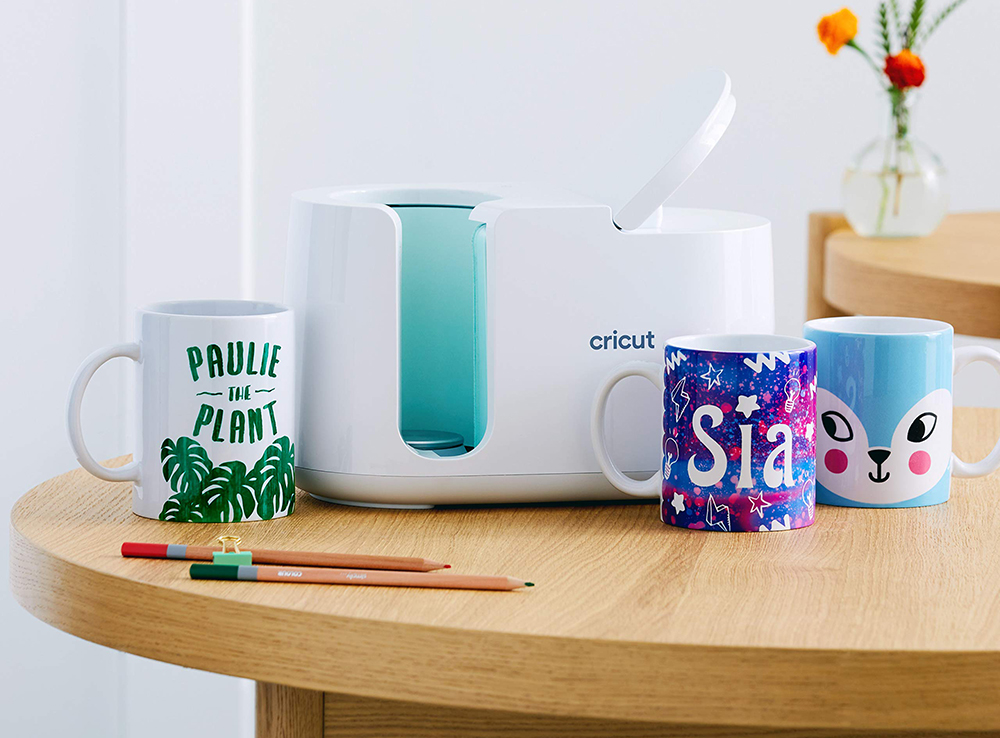

As heat press Trusted Source Heat press - Wikipedia A heat press is a machine engineered to imprint a design or graphic on a substrate, such as a t-shirt, with the application of heat and pressure for a preset period of time. While heat presses are often used to apply designs to fabrics, specially designed presses can also be used to imprint designs on mugs, plates, jigsaw puzzles, caps, and other products. en.wikipedia.org continue to flock the market, designers ponder whether acquiring one increases the chances of better printed shirts than the old techniques.
Indeed, heat press machines are useful alternatives to screen printing and offer an excellent deal for small and large enterprises. Although screen printing is used for commercial purposes, heat presses serve the purpose of these products on a lower scale.
It starts as simple as printing shirts in your home or for business. There’s nothing as good as making easy money from automatic machines.
But, wait. What exactly are heat press machines?
Well, they are machines for printing graphic designs, logos, and artwork on t-shirts and mugs. They are pretty simple to operate and are quite affordable. Therefore, people with a passion for designing shirts have a great opportunity for experimenting with different designs.
However, you should know how to use a heat press to get the most out of it; many people purchase heat presses and end up spoiling their fabrics.
The good thing is the majority of these machines come with a manual with clear instructions on how to use heat presses.
But if you don’t find one, you’ll need a little help. And that’s why we have this guide. We’ll cover everything you should know about these machines.
Heat press machines are straightforward than other t-shirt printing methods. As mentioned earlier, any person who plans to open a business or print shirts in their homes must own a heat press machine and understand how it operates.
The machines give you the freedom to showcase your creativity and make good money. Notably, heat press machines are designed to work on various materials like hat brims, wood, metals, garments, tote bags, ceramic tiles, and much more.
They have electronically heated metal surfaces (platen). Operating them involves applying pressure to the platen only after setting the correct temperature and printing time.
First things first, ensure your materials are in perfect condition before placing them on the platen.
After that, move on to the settings.
So, what are the optimal temperatures recommended for heat press machines?
For multi-purpose material, a temperature of 350 degrees Fahrenheit is perfect. You can set it a little above or below the temperature depending on the specific type of multi-purpose material.
The correct time would be 10-12 seconds. Polyesters melt in high temperatures. Therefore, for sublimated fabric (this is a type of polyester material), set the temperature to around 270 degrees Fahrenheit.
Also, set your time at ten seconds; make sure only to peel when hot. For stretching material, an ideal temperature would be 335 degrees Fahrenheit, while its heating time should be between twelve and fourteen seconds. Peeling should be done when the material is cold.
Well, should you prefer to design your products in full color, then set the temperature at 350 degrees Fahrenheit. It should take 10-12 seconds, and peeling is done when hot. Vintage looks go with a temperature of 350 degrees Fahrenheit and a time of 10-12 seconds.
Be careful when handling glittering designs. You don’t want to mess up the rough glittering materials on the surface. Here, press machines work best at a temperature of 350 degrees Fahrenheit, while the time to be taken is normally fifteen seconds. Make sure to peel while hot to have the best outcome.
If you specialize in T-shirts and sweatshirts, consider having a specific temperature for your products. It eases the process and saves a lot of time. Set a temperature of between 365-375 degrees Fahrenheit, then you can switch back and forth in the range. The machine’s operating time should be between 10-12 seconds, and peeling should only be done when the material is hot.
Glow in the dark materials are also quite tricky. You should print your design in a way that allows the material to still shine after exposure to light. A temperature of 350 degrees Fahrenheit and a time of between 10-12 seconds is good for this process.
For fabric with a metal-like finishing, you’ll need a setting of 320 degrees Fahrenheit and operate the machine for twenty seconds.
Lastly, reflective material operates at a temperature of 305 degrees Fahrenheit and takes 10-12 seconds.
Overall, heat press machines operate uniquely for different materials. To get the best out of your appliances, inspect the correct temperature setting, set the right time for the operation, and peel appropriately. These three methods ensure the best results and enable heat press machines to work at their optimum.
Choosing the right heat press is essential for success in your printing. It is vital to consider several factors before settling for one heat press or another.
Notably, different heat presses serve different functions.
For instance, those looking to print t-shirts and individuals with a preference for sports uniforms or doing sublimations must go with different heat presses that fit their needs. Decisions are made based on style, suitability, and the prices of heat presses.
Based on the style, clamshell and swing away are the most common. These types have their pros and cons that must be considered when choosing the right heat press.
The clamshell is easy to use, portable, and requires minimal steps to operate. These types have a hinge that separates the upper and lower platens and are shell-like in design. They also take up little space and are perfect for printing in large volumes.
However, they offer a limited layout view and take more effort in maintaining the set temperatures.
If you want a good Clamshell machine, check out the PowerPress digital sublimation heat press machine for T-shirts. It has a silicone gel baseboard, replaceable fuse, and LCD Control Board for convenience. Its size is also quite suitable for indoor printing.
On the other hand, the swing-away heat press offers a more comprehensive view of the layout area, preserves electricity, and enables a heat-free work area.
It is also easy to operate and durable. On the flip side, individuals must be meticulous to avoid moving designs out of the work area when using swing-away heat presses.
You’ll need more space when operating these machines, and remember, they are usually more expensive than clamshells.
The Seeutek 5 in 1 heat press machine combo offers the best experience in design printing. It has multiple accessories, including 1 x fully-assembled machine, 1 x Hat press, 1 x user manual, and can be used for ceramic plates, ceramic tiles, mugs, and much more. This product is recommended as the right heat press for diverse products with full functionality in printing designs.
Quick note: It’s crucial to consider several things when purchasing heat presses. The key ones include your machine’s quality, manufacturer, timer availability, and accurate temperatures among others.
It’s obvious that high-quality heat presses are more expensive yet durable. Ask yourself the material used to make the heat presses, warranties offered, and check the reviews on quality.
You must also know who you are buying from as there are several unstandardized products out there.
Don’t forget to check if the product’s timer is manual or digital, programmable, and resets automatically. These are the most vital elements that must be considered when choosing the right presses.
There are steps to be followed when using a heat press. Learning how to do so is useful when launching your printing venture.
Heat press instructions are found in their manuals and come inside the products’ packages. However, if yours doesn’t have one, you might be wondering how to use a heat press for t-shirts.
Shirts and t-shirts are different, thus different heat pressing techniques must be used on both. Learning how to use a heat press with vinyl for shirts also greatly enhances your designing capabilities.
These are the steps that should be taken when using a heat press for shirts and T-shirts.
Quality transfer papers are vast in the market. You can either buy a printed paper or print your design.
Among the common types Trusted Source Which type of Transfer Paper for your project? - WPG Paper Company Ltd. Transfer paper, also known as sublimation paper, is widely used in the textile sector and which type of paper you choose is very much dependent upon your project and desired effect. pgpaper.com of transfer papers are inkjet transfers, laser copier transfers, store bought transfers, and die-cut vinyls.
After identifying a good transfer paper, print your design on it if you didn’t purchase an already printed one.
One important matter to consider is that you must use papers labeled for laser printers if you only have a laser printer. Afterward, trim the transfer and remain with only the required part if necessary.
Lift the handle to open the machine, move the platen from the pad, and keep it open while it heats. At this moment, adjust the temperature and set the pressure to a good level. Don’t forget to set the timer according to your material.
Put your shirt or t-shirt on the plate; ensure that the part you want to print is facing up.
Place the transfer paper on top of the shirt. Be careful to place it face-down. You can choose to cover the transfer paper or leave it as it is.
Afterward, close the press and press the start button. Once the timer stops, lift the handle and remove the shirt.
Pressing a hat is somehow different from pressing a shirt and t-shirt.
Although pressing techniques are standard, hats are not flat and cannot be placed in heat press machines like other materials.
First, there are specific heat presses that must be considered for hats like the Hotronix Maxx Digital Cap Heat Press which is the best one in the market. The machine is 2cm thick, made of a silicone rubber bottom pad, and offers a temperature range of 200-400 degrees Fahrenheit. Additionally, cast-in tubular heating eliminates cold in specific areas of the machine. That said, then, these are the steps followed in using a hat heat press.
Heat pressing a mug also follows similar steps. However, mugs also have unusual designs that require specific heat presses.
One must know how to use a mug heat press and carefully implement the steps to ensure project success. Consider following these steps to get the best heat pressing.
Keep it straight and simple when using heat presses to get the best results. Acquiring the best heat presser for a specific task is just the first step.
Their operation methods are not as complicated as other methods of printing designs. Learn how to use a heat press step by step, and you will never go wrong. Setting the right temperature is crucial to your overall success. Many people mess with their products because they don’t understand the proper temperatures to set.
Also, ensure your timing is accurate and skillfully adjust the pressure. Take your time to set your equipment before placing your product.
Lastly, heat press transfers are vital for good designs. Ensure you have quality heat press transfers for your projects, and you won’t regret it in the long run.
Heat presses present unlimited opportunities to professional designers and those who get engaged for the fun of it.
These machines are the best tools for printing shirts, mugs, hats, and several other products, considering their affordability and durability.
The steps involved in using one are not hard to comprehend. Furthermore, once you grasp how to use one type of heat press, you can apply the same procedure to the others.
These machines often come with a manual. However, should you lack one, you’ll always get resources like these to guide you.
To ensure the durability of heat presses, set them in spacious areas with a continuous power supply.
Also, do regular maintenance and avoid overusing them. They become hot speedily, so give them ample time to cool before reusing.
Apply your creativity in designing through heat presses, and you will probably make some good money out of it.
